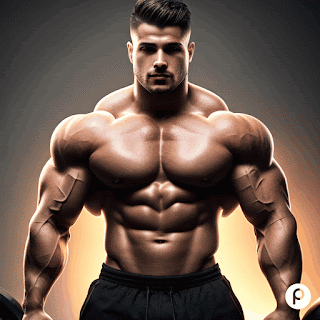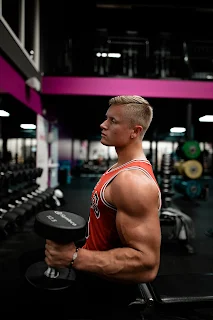Holistic Fitness Guide: Personalized Path to Well-being
Elevate Your Fitness: A Holistic Path to Well-being
Setting fitness goals is crucial in helping individuals maintain a healthy and active lifestyle. Without clear objectives, it is easy to lose focus and motivation, leading to a lack of progress and eventually giving up on fitness altogether. Fitness goals provide a sense of direction, accountability and help to track progress, which can lead to increased self-confidence and satisfaction.
A well-structured fitness plan can help to maximize results and reach fitness goals more efficiently. Having a plan helps to ensure that individuals are incorporating a balanced and varied workout routine, leading to better overall health and fitness. A fitness plan can also help to prevent injury, burnout and boredom, as well as provide structure and motivation to stick to the fitness routine.
Assessment of Current Fitness Level
Physical Examination
A physical examination is an important step in the process of setting fitness goals. This can include a body composition analysis, measuring weight, body fat percentage, muscle mass, and other relevant health indicators. The results of the physical examination can provide valuable information about an individual's current fitness level and help to identify areas for improvement.
Understanding Physical Abilities
It is possible to tailor a fitness plan that addresses specific needs and goals. Identifying strengths can help individuals to focus on maintaining and improving upon their existing abilities, while addressing weaknesses can help to eliminate potential roadblocks in reaching fitness goals.
Setting Realistic Goals
It is important to set achievable and realistic fitness goals, considering an individual's current fitness level and physical abilities. Setting overly ambitious goals can lead to frustration, disappointment, and eventually giving up on fitness altogether. By starting with smaller, achievable goals and gradually building upon them, individuals can increase their chances of success and stay motivated along the way.
Setting SMART Goals
Defining Clear Goals
Setting SMART goals is a proven method for effectively achieving desired outcomes. By defining goals in clear and concise terms, individuals can ensure that they are specific, measurable, achievable, relevant, and time bound. For example, a specific fitness goal could be "to lose 10 pounds in the next 3 months."
Setting Targets and Deadlines
Setting specific targets and deadlines helps individuals to focus their efforts and stay on track. This can involve creating a detailed workout plan, setting a schedule for regular exercise, and tracking progress through regular weigh-ins and measurements. Deadlines help to create a sense of urgency and motivate individuals to stick to their fitness plan.
Measuring Progress
Regularly measuring progress is crucial in determining the success of a fitness plan and adjusting if necessary. This can involve tracking changes in body composition, strength and endurance levels, and other relevant health indicators. By measuring progress, individuals can make informed decisions about their fitness plan.
Incorporating Different Exercises
Personalized Fitness Plan
Creating a personalized fitness plan involves incorporating a variety of exercises to achieve a well-rounded workout routine. This can include cardio exercises such as running, cycling, and swimming, strength training exercises such as weightlifting, bodyweight exercises, and functional training, and flexibility exercises such as yoga and stretching.
Balanced Workout Routine
Achieving a balanced workout routine is crucial in maintaining overall health and fitness. This involves incorporating a combination of cardio, strength training, and flexibility exercises to target different aspects of fitness. For example, cardio exercises can improve cardiovascular health, strength training can build muscle and improve bone density.
Healthy Eating Habits
Achieving and maintaining fitness requires a commitment to both physical activity and healthy eating habits. Incorporating healthy eating habits can help to fuel the body, provide essential nutrients, and support weight loss and muscle building goals. This can involve incorporating a balanced diet with plenty of fruits, vegetables, whole grains.
Staying Motivated
Tracking Progress
Tracking progress and celebrating achievements is a powerful motivator in reaching fitness goals. This can involve regularly measuring body composition, keeping a workout journal, and celebrating milestones and successes along the way.
Accountability Partners
Having an accountability partner or joining a fitness group can provide support, encouragement, and motivation in reaching fitness goals. Having someone to share the journey with can help to keep individuals on track and provide new ideas and inspiration.
Variety in Routine
Avoiding boredom is an important factor in staying motivated and engaged in a fitness routine. Mixing up the routine can involve trying new exercises, incorporating different forms of physical activity, or exploring new workout environments.
Final Thoughts
Staying committed to fitness goals is essential in achieving desired outcomes and maintaining a healthy lifestyle. This requires discipline, focus, and a willingness to make lifestyle changes and stick to a routine.
A healthy lifestyle has numerous benefits, including improved physical and mental health, reduced risk of chronic diseases, and increased energy and vitality. Regular exercise and healthy eating habits can also lead to improved sleep, better mood, and increased confidence.
Reminding oneself of the end goal can help to stay motivated and focused on reaching desired outcomes. This can involve visualizing the result, setting reminders and affirmations, and focusing on the benefits and rewards of reaching fitness goals.


















